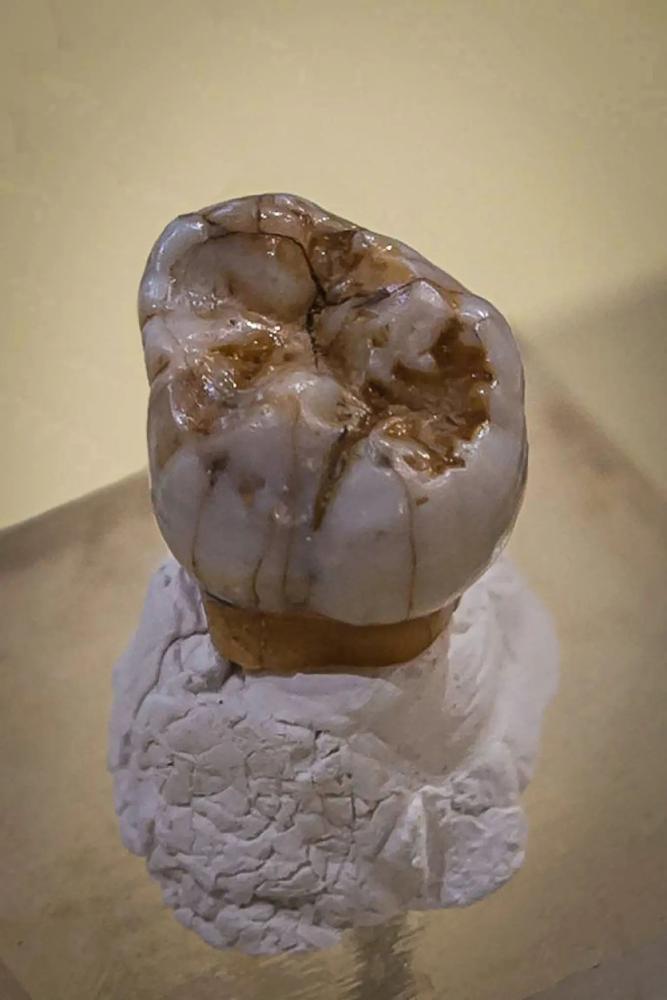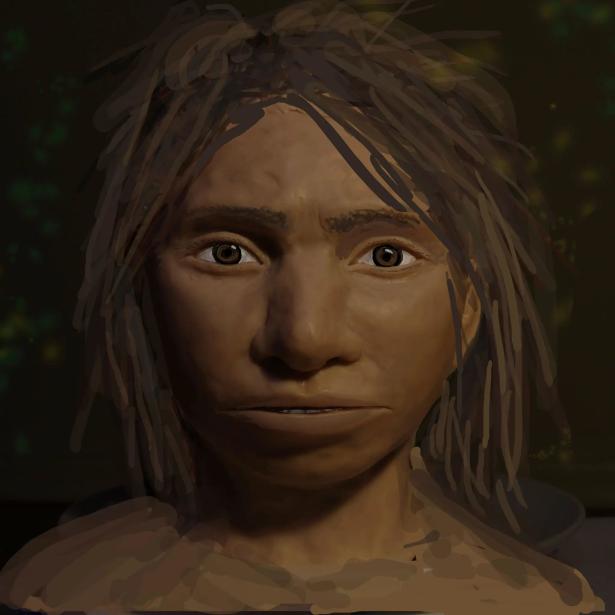Neanderthals may have vanished 40,000 years ago, but they are no strangers to us today. Their stocky skeletons dazzle in museums around the world. Their imagined personas star in television ads. When Kevin Bacon noted on Instagram that his morning habits are like those of a Neanderthal, he did not stop to explain that our ancient cousins interbred with modern humans expanding out of Africa.
But there’s no such familiarity with the Denisovans, a group of humans that split from the Neanderthal line and survived for hundreds of thousands of years before going extinct. That’s largely because we have so few of their bones. In a new review paper, anthropologists tally all of the fossils that have been clearly identified as Denisovan since the first discovery in 2010. The entire list consists of half a broken jaw, a finger bone, a skull fragment, three loose teeth and four other chips of bone.
“The bits of Denisovan we have, it’s almost nothing,” said Janet Kelso, a paleoanthropologist at the Max Planck Institute for Evolutionary Anthropology in Leipzig, Germany, who helped write the review.
Nevertheless, many scientists are growing increasingly fascinated by Denisovans. Like us, they were extraordinarily resilient, arguably more so than Neanderthals. “I find Denisovans way more interesting,” said Emilia Huerta-Sánchez, a geneticist at Brown University.
What the Denisovans lack in fossils they make up for in DNA. Geneticists have been able to extract bits of genetic material from teeth and bones dating back 200,000 years. They have found genetic clues in the dirt of cave floors. And billions of people on Earth carry Denisovan DNA, inherited from interbreeding.
The evidence offers a picture of remarkable humans who were able to thrive across thousands of miles and in diverse environments, from chilly Siberia to high-altitude Tibet to woodlands in Laos — perhaps even in the Pacific islands. Their versatility rivals our own.
“What we have found out about Denisovans is that, from a behavioral perspective, they were much more like modern humans,” said Laura Shackelford, a paleoanthropologist at the University of Illinois.
The Denisovans get their name from the Denisova Cave in Siberia, where their remains were first identified. Russian paleontologists had been pulling up bits of bone from the cave floor for years when Dr. Kelso and other researchers offered to search them for DNA.
A molar tooth somewhere between 122,700 and 194,400 years old contained Neanderthal-like genes. But the tooth’s DNA was distinct enough to suggest it had come from a separate branch of human evolution. A finger bone dating back 51,600 to 76,200 years belonged to the same lineage, demonstrating that it had existed for tens of thousands of years — if not more.
Since then, researchers have found more Denisovan fossils in the cave, and they have also gathered loose genetic material from the cave floor. The samples date from 200,000 to 50,000 years ago. A 90,000-year-old bone fragment belonged to a Denisovan-Neanderthal hybrid, showing that the two groups sometimes interbred.

Dr. Kelso and her colleagues quickly came to suspect that the Denisovans had not been limited to Siberia. The researchers found that some stretches of the ancient humans’ DNA closely matched genetic material carried around by people in East Asia, Native Americans, Aboriginal Australians and people in New Guinea and other islands in the area.
When modern humans expanded out of Africa some 60,000 years ago, the Denisovans must have been in their path in order to interbreed and introduce some of their genes into our lineage. But it wasn’t until 2019 that scientists found the first fossil trace of Denisovans beyond Siberia, in a high-altitude cave in Tibet.
Researchers there found part of a jaw dating back more than 160,000 years with Denisovan-like teeth. It also contained proteins with a molecular structure that might be expected from a Denisovan, based on their genes. The following year, the researchers reported that the cave floor contained Denisovan DNA.
In 2022, Dr. Shackelford and her colleagues made a discovery that could extend the Denisovan range to Southeast Asia, right in the path of modern humans in their early waves out of Africa. In a cave in Laos, they found a tooth about as old as the Denisovan jaw, and matching the tooth embedded in it.
The Laotian tooth did not yield any DNA, however, so the researchers have started sifting through sediments in nearby caves. “We have loads of DNA,” Dr. Shackelford said. “But we don’t know yet what all that DNA represents.”
Other researchers are surveying the Denisovan DNA inherited by living people. The pattern of mutations documented so far suggests that several genetically distinct groups of Denisovans interbred with our ancestors. What’s more, none of those Denisovan groups was closely related to the ones who occupied the Denisova cave.
Some of the most intriguing results have come from studies on people in New Guinea and the Philippines. They show signs of repeated instances of interbreeding with Denisovans that were distinct from what occurred on mainland Asia. Dr. Kelso and other experts on Denisovans suspect that when sea levels were low during the last ice age, Denisovans may have walked to New Guinea and the Philippines, where they lived for thousands of years before modern humans arrived.
Put together, these findings suggest that Denisovans thrived in vastly different environments. They endured the harsh winters of Siberia and the thin air of the Tibetan plateau. In Laos, Dr. Shackleford and her colleagues have found that Denisovans lived in open woodlands with herds of dwarf elephants and other mammals to hunt. And they may have lived in rainforests in New Guinea and the Philippines.
That flexibility stands in sharp contrast to Neanderthals, who adapted to the cold climate of Europe and western Asia but did not expand elsewhere.
The Denisovans’ versatility may have helped them last for a long time. People in New Guinea may have inherited some Denisovan DNA from interbreeding just 25,000 years ago.
Dr. Shackelford said findings like these raised the possibility that Denisovans and modern humans coexisted and interacted for tens of thousands of years — though whether they communicated is unclear. “That’s really going down the rabbit hole,” Dr. Shackelford said.
After the Denisovans disappeared, their genetic legacy lived on. Certain genes of Denisovans have become more common because they provide an evolutionary advantage in modern humans. In Tibet, Dr. Huerta-Sánchez and her colleagues have found a Denisovan gene that helps people survive at high altitudes. She has also found that Native Americans carry a Denisovan gene for a mucus protein, though its benefit remains a mystery.
In New Guinea, some Denisovan genes have been favored by people living in the lowlands, while others are favored in the highlands. The lowland genes appear to help fight infections. It’s possible that high rates of malaria and other diseases make those genes valuable.
But in the highlands, the Denisovan genes with the evolutionary advantage are active in the brain. Michael Dannemann, an evolutionary geneticist at the University of Tartu in Estonia who led the New Guinea study, speculated that at high altitudes in New Guinea, people might face periods of food shortages. “You might have to adapt body parts that use a lot of energy, and one that consumes a lot of energy in humans is the brain,” he said.
Dr. Shackelford predicted that the search for more Denisovan fossils would be hard, because the humid conditions in places like Laos don’t favor the survival of skeletons. “I’m begging for bones,” she said. “But I am going to be wanting bones for a long time.”
Carl Zimmer covers news about science for The Times and writes the Origins column. I report on life — from microbes at the bottom of the sea to high-flying migratory birds to aliens that may dwell on other planets. For my column, I focus on how life today got its start, including our own species. Along with covering basic science, I write stories about how biological discoveries evolve into medical applications, such as editing genes and tending to our microbiome.
I wrote my first story for The Times in 2004. In 2013 I became a columnist. I began my career in journalism at Discover Magazine, where I rose to senior editor. I went on to write articles for magazines including The Atlantic, Scientific American, Wired and Time.
I also write books about science. So far, I’ve published 14, including “She Has Her Mother’s Laugh,” “Life’s Edge,” and “Parasite Rex.” I am professor adjunct at Yale’s Department of Molecular Biophysics and Biochemistry, where I teach seminars on writing and biology lecture courses. I have also co-authored a textbook on evolutionary biology, now in its fourth edition.
My books and articles have earned a number of awards including the National Academics Communication Award and the Stephen Jay Gould Prize, given out by the Society for the Study of Evolution. I have won fellowships from the Johns Simon Guggenheim Foundation and the Alfred P. Sloan Foundation. During the Covid-19 pandemic, I contributed to the coverage that won The Times the Pulitzer Prize for Public Service in 2021. I am, to my knowledge, the only writer after whom both a species of tapeworm and an asteroid have been named.
I live with my wife in Connecticut, alongside salt marshes rife with snapping turtles.
Subscribe to the New York Times.

Quantum Physics Makes Small Leap with Microscopic Gravity Measurement
Ian Sample
Science editor, The Guardian
Experiment records minuscule gravitational pull as a step to understanding how gravity operates at subatomic level
February 23, 2024


Spread the word